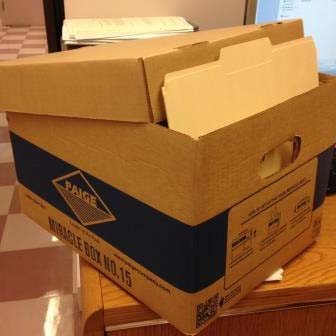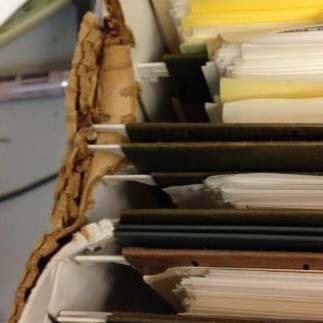Managing University Records
General Records Guidelines | Record Packing Tips | Training Slides | Services & Vendors
Managing eFiles | Website Preservation | Transferring Digital Records
Record Packing Tips
Before Packing Boxes
Purge your files
- Remove duplicate copies. If needed, keep no more than (2) copies of a publication or document
- Remove worksheets, work papers, calculations, outlines, drafts, notes, to-do lists, reminders, appointment set-ups, training binders, conference packets
- Remove reading files: articles, websites, chapters of books, newspaper articles, copies of documents used in planning or research
- Remove non-Columbia publications: catalogs, newsletters, reports, manuals, magazines, books
- Remove blank forms, labels, stationery and supplies
- Remove accounting statements, purchase orders, requisitions, invoices, cash receipts, vouchers, check requests, travel expense reports
Label all folders
- Use descriptive names to help identify folders
- Go from general to specific: start with the general area then add specific details
- Avoid terms such as “Miscellaneous” and “General”
Inventory all boxes
- Assign a number to each box (e.g. 2010FALL001)
- Create a folder-level inventory of each box. For each folder:
- identify the box number
- copy the folder name
- note the record type (financial, personnel, correspondence, publication, etc.)
- enter the date range of the records inside the folder
- identify the box number
- Keep inventories in easily accessible places so all record users can easily look up the folder and box numbers
When you are ready to pack

Use the 1-cf. standard size record container
- The box should be 12" x 15" x 10". Big enough for a letter size folder in the narrow side, but wide enough for a legal size folder on the wide side (but not wider or longer than that).
- Ideally, boxes should not have glued parts. Glue has a limited shelf life so it's better to use the ones with cardboard parts that fit together to form the box.
- Do not use long or transfile boxes. These boxes are designed to match the size of file cabinet drawer (convenient) but their non-standard size makes them too heavy to handle and are more expensive to store.
- Do not use printer paper boxes. They are a non-standard size, have glued parts, and are not built for long-term storage.

Do not pack hanging folders: the metal hooks that help the files slide in the file drawers work like angry teeth on the cardboard. They also take up room in the box.
Pack boxes mostly full.
If a box is too full:
- It is difficult to handle, too heavy
- It is not easy to find and retrieve folders
- Box fronts and handles tear easily
If a box is too empty:
- Folders slide down or fall down
- Records can bend, curve or get damaged
- Records can slide out of folders and become misfiled
- It is not easy to find and retrieve folders

A box should be mostly full, at least 3/4 full:
- Folders need to be able to stay upright, remain standing
- There should be enough room to find and retrieve folder
- Use the hand/arm test: you should have enough room to fit a hand behind the folders; but not more room than if you put your arm behind the folders
Make sure that the box lid fits securely. The lid should lay flat on top of the box.
- Some boxes are stacked one on top of another, so make sure that the box lid is not at an angle.
- Some boxes are stored on shelves and if the lid doesn’t fit, the box will not fit on the shelf.
- For binders, you may need to rest then on their side, if they are too tall on their spine. You might also consider removing the items from the binder.